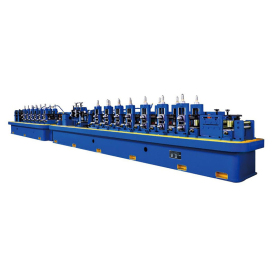
Understanding the Role of High-Impedance Impedors in Electrical Circuits: Applications, Benefits, and Considerations for Engineers
High-impedance impedors play a crucial role in various electrical engineering applications, serving a wide range of purposes from signal conditioning to impedance matching. To appreciate their importance, we must first understand what high-impedance impedors are and how they differ from standard impedance elements. This article delves into the fundamentals, applications, advantages, and considerations for engineers using high-impedance impedors in their designs.
What Is a High-Impedance Impedor?
A high-impedance impedor is an electrical component that exhibits a significantly high resistance to current flow. Unlike low-impedance elements, which allow substantial current to pass, high-impedance impedors limit the current while providing a certain level of voltage. The principal measure of impedance, which includes both resistance and reactance, is expressed in ohms (Ω) and is crucial for understanding how these components interact within circuits.
High-impedance impendence can be found in various types of circuit configurations, including resistors, capacitors, and inductors designed specifically for high impedance applications. They are essential in designs requiring minimal loading on the circuit, ensuring that the circuit parameters remain unaltered by the measurement or interfacing device.

Understanding the Role of High-Impedance Impedors in Electrical Circuits: Applications, Benefits, and Considerations for Engineers
Applications of High-Impedance Impedors
1. **Signal Conditioning**: One of the primary applications of high-impedance impedors is in signal conditioning, particularly in analog-to-digital converters (ADCs) and sensor interfaces. In these cases, high-impedance impedors can be used to buffer signals from sensors to prevent loading, ensuring that the sensor output is accurately represented.
2. **Instrumentation and Measurement**: In the field of instrumentation, high-impedance impedors are often employed in voltmeters and oscilloscopes. These devices require high input impedance to measure voltages accurately without introducing significant current draw that could affect the voltage being measured.
3. **Audio Equipment**: In audio engineering, high-impedance inputs are essential for interfacing microphones and instruments with preamplifiers. High-impedance impedors prevent unnecessary loading that could distort the audio signal, preserving the quality of sound recordings.
4. **Communication Systems**: In communication applications, high-impedance impedors are utilized to match transmission lines to receivers or other elements. This helps minimize signal reflection and maximize power transfer, which is paramount for maintaining signal integrity over long distances.

Understanding the Role of High-Impedance Impedors in Electrical Circuits: Applications, Benefits, and Considerations for Engineers
5. **Medical Devices**: High-impedance impedors are vital in medical instrumentation, such as electrocardiograms (ECGs) and electroencephalography (EEG) equipment. These devices require sensitive measurements with minimal disruption to the biological signals, making high impedance an essential characteristic.
Benefits of Using High-Impedance Impedors
High-impedance impedors carry several benefits that make them preferable in specific applications. These include:
– **Minimal Load Effect**: By having a high impedance, these components do not draw significant current, which is especially crucial in sensitive measurements where the source may be non-ideal. – **Signal Integrity**: They help maintain the integrity of signals, ensuring that the information transmitted through the circuit remains unchanged and reliable.
– **Versatility**: High-impedance impedors can be used in various applications across different fields, from industrial automation systems to consumer electronics.
Considerations for Engineers
Despite the advantages, engineers must also consider several factors when integrating high-impedance impedors into their designs:
1. **Noise Susceptibility**: High-impedance circuits are often more susceptible to noise due to their sensitivity. Engineers must design circuits with adequate shielding and layout practices to minimize noise pickup.
2. **Loading Effects**: While high-impedance devices minimize loading effects, they also require careful consideration of the impedance of subsequent stages in signal processing. Mismatched impedances can lead to signal degradation, making it vital to ensure proper impedance matching throughout the circuit.
3. **Temperature Stability**: The performance of high-impedance impedors can be influenced by temperature variations, which can affect resistance and, therefore, the reliability of measurements. It’s crucial to select components with suitable temperature coefficients.
4. **Frequency Response**: High-impedance components may exhibit varying performance across different frequencies. Thus, understanding the frequency characteristics of each element in a circuit is critical for effective design.
Conclusion
High-impedance impedors are indispensable in modern electrical engineering, presenting unique benefits and specific challenges. Understanding their role, applications, and the considerations necessary for their use ensures that engineers can design effective and reliable circuits across various applications. Whether in medical devices, communication systems, or audio engineering, high-impedance impedors contribute significantly to advancing technology, allowing for precise measurements and high-quality signal transmission. Their significance in circuit design cannot be understated, making them an essential area of study for anyone involved in electrical and electronic engineering.Automatic induction heating equipment



